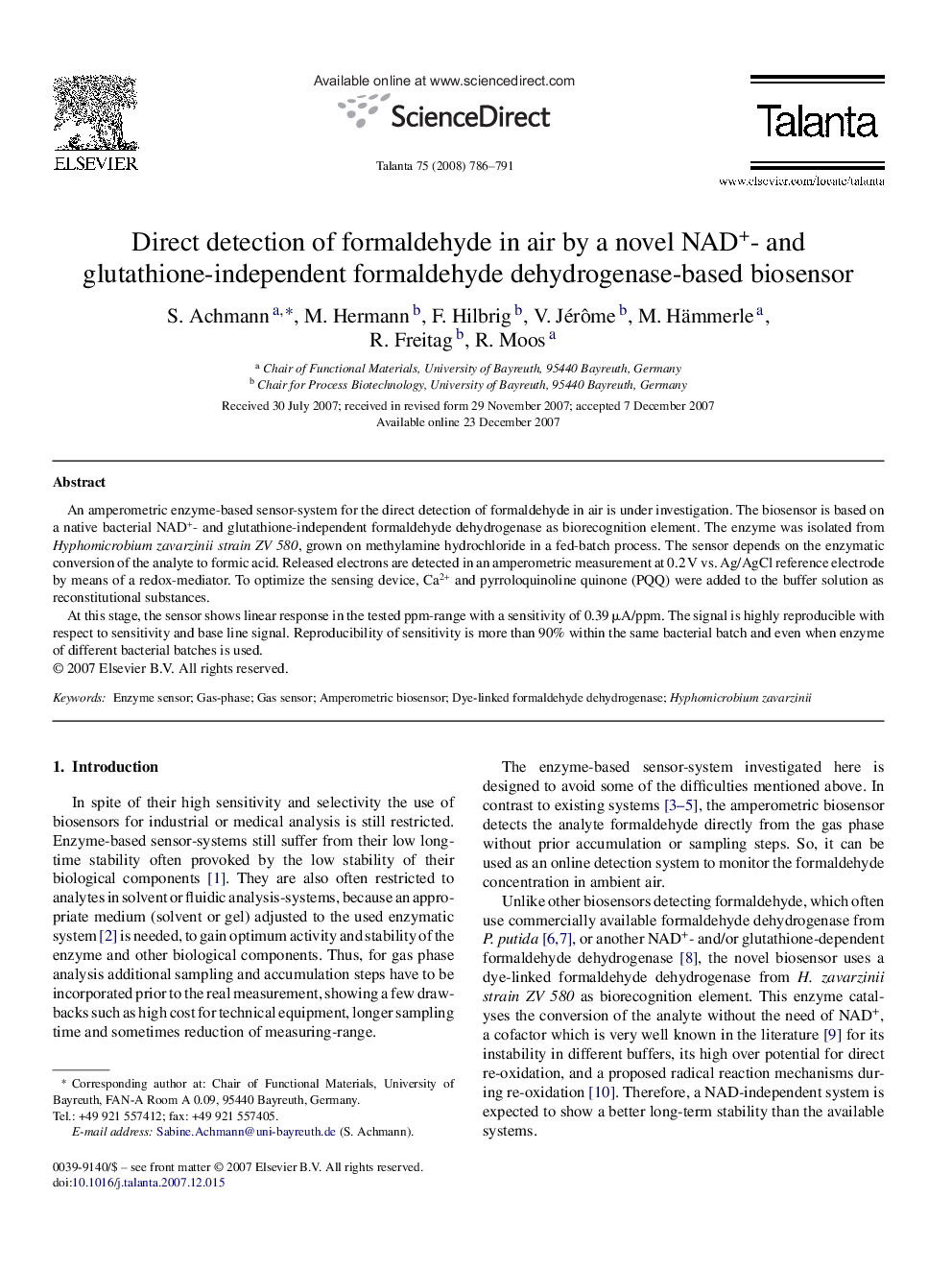| Article ID | Journal | Published Year | Pages | File Type |
|---|---|---|---|---|
| 1245588 | Talanta | 2008 | 6 Pages |
An amperometric enzyme-based sensor-system for the direct detection of formaldehyde in air is under investigation. The biosensor is based on a native bacterial NAD+- and glutathione-independent formaldehyde dehydrogenase as biorecognition element. The enzyme was isolated from Hyphomicrobium zavarzinii strain ZV 580, grown on methylamine hydrochloride in a fed-batch process. The sensor depends on the enzymatic conversion of the analyte to formic acid. Released electrons are detected in an amperometric measurement at 0.2 V vs. Ag/AgCl reference electrode by means of a redox-mediator. To optimize the sensing device, Ca2+ and pyrroloquinoline quinone (PQQ) were added to the buffer solution as reconstitutional substances.At this stage, the sensor shows linear response in the tested ppm-range with a sensitivity of 0.39 μA/ppm. The signal is highly reproducible with respect to sensitivity and base line signal. Reproducibility of sensitivity is more than 90% within the same bacterial batch and even when enzyme of different bacterial batches is used.
